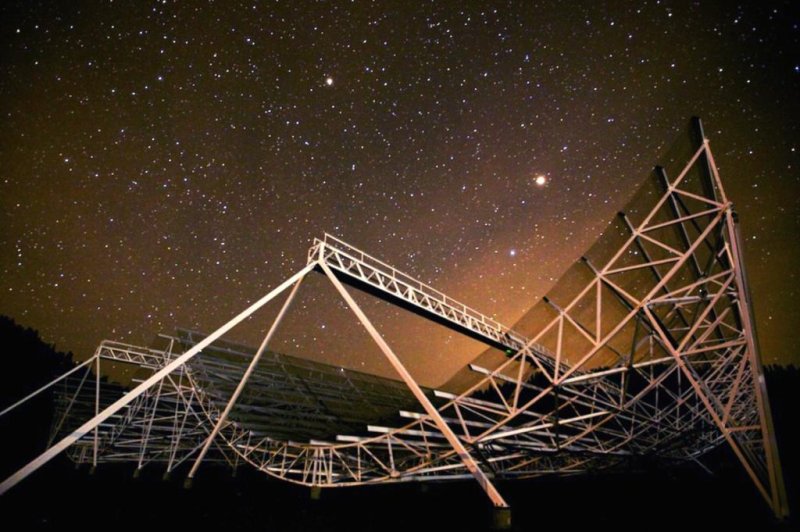The Canadian Hydrogen Intensity Mapping Experiment telescope has recorded 13 new fast radio bursts, including a mysterious repeating signal. Photo by CHIME
Jan. 10 (UPI) -- Canada's CHIME telescope has detected 13 new fast radio bursts, or FRBs, including a mysterious "repeater" signal of six bursts from the single source, a galaxy located 1.5 billion light-years from Earth.
The unexplained radio bursts were recorded over the course of just three weeks in July 2018, during the telescope's warmup phase. CHIME, the Canadian Hydrogen Intensity Mapping Experiment, is not yet working at full capacity.
Several dozen FRBs have been recorded over the last decade, but CHIME's observations mark just the second time a repeating signal has been documented.
"Until now, there was only one known repeating FRB. Knowing that there is another suggests that there could be more out there," Ingrid Stairs, CHIME researcher and an astrophysicist at the University of British Columbia, said in a news release. "And with more repeaters and more sources available for study, we may be able to understand these cosmic puzzles -- where they're from and what causes them."
The majority of FRBs identified prior to CHIME's observations featured high frequencies, signals close to 1400 MHz. CHIME can only record signals between 400 MHz and 800 MHz. The new observations suggest FRBs are common at lower frequencies.
The new signals are likely to force scientists to reconsider current FRB models.
"Whatever the source of these radio waves is, it's interesting to see how wide a range of frequencies it can produce," said CHIME scientist Arun Naidu of McGill University. "There are some models where intrinsically the source can't produce anything below a certain frequency."
Astrophysicists detailed the data recorded by CHIME in two different papers published this week in the journal Nature.
Though scientists don't yet have an explanation for fast radio bursts, the latest signals reveal significant levels of "scattering" -- details that could help scientists better characterize the nature of the astrophysical environs from which they originate. The scattering details suggest there is something unique about structural characteristics of FRB sources.
"That could mean in some sort of dense clump like a supernova remnant," said CHIME researcher Cherry Ng, an astronomer at the University of Toronto. "Or near the central black hole in a galaxy. But it has to be in some special place to give us all the scattering that we see."















